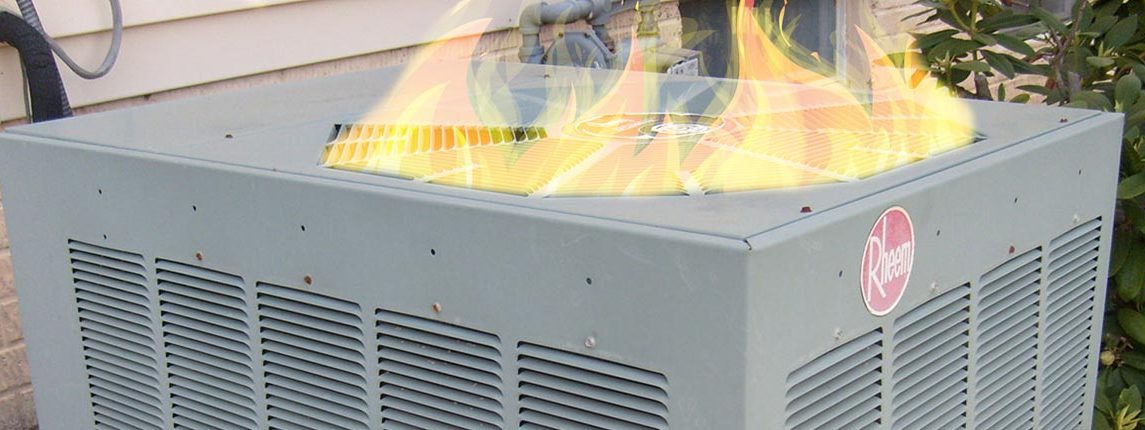With the temperatures in Texas somewhere between super hot and surface of the sun hot keep an eye on your AC. Not because of the reason you might think. yes, it might catch fire and melt, but that’s normal. The bigger concern is flooding from a clogged condensation drain line.
When your air conditioner is running it creates condensation. For a modern residential AC that can be 5 to 20 gallons of water per day. If the condensation isn’t draining properly it can leak out into your house. This often goes unnoticed fora while which leads to even more damage.
There are many different ways the AC condensation is drained. The two types of installations we encounter most frequently are:
Attic Installation
If you have an attic mounted evaporator/blower unit the overflow drain will likely be in your soffit. When water is dripping out of this overflow drain it means the pan below your AC unit is full. This pan captures water in the event of the condensation line failure. Over time the pan can rust and fail. Pouring water into your attic and ceiling.
Interior/Closet Installation
If you have a closet mounted evaporator/blower unit, it might be sitting in a pan, like a water heater. To keep an eye on this, you’ll want to check it once a month or so. if you see water filling up the pan then your AC drain line is likely clogged.
A mistake most homeowners make is to assume that the drip and or overflow are normal. That water should be in the pan, or dripping out of the overflow. These are the last line of defense preventing water damage from the AC condensation.
Regardless of which type you have, you will want to keep an eye on it so that it doesn’t cause water damage in your home. If you suspect that your drain line is clogged, you can unclog it yourself or call a professional.
if you suspect that water has leaked out give us a call to perform our free moisture inspection. We will locate all of the areas effected by the condensation and develop a plan to dry it.

